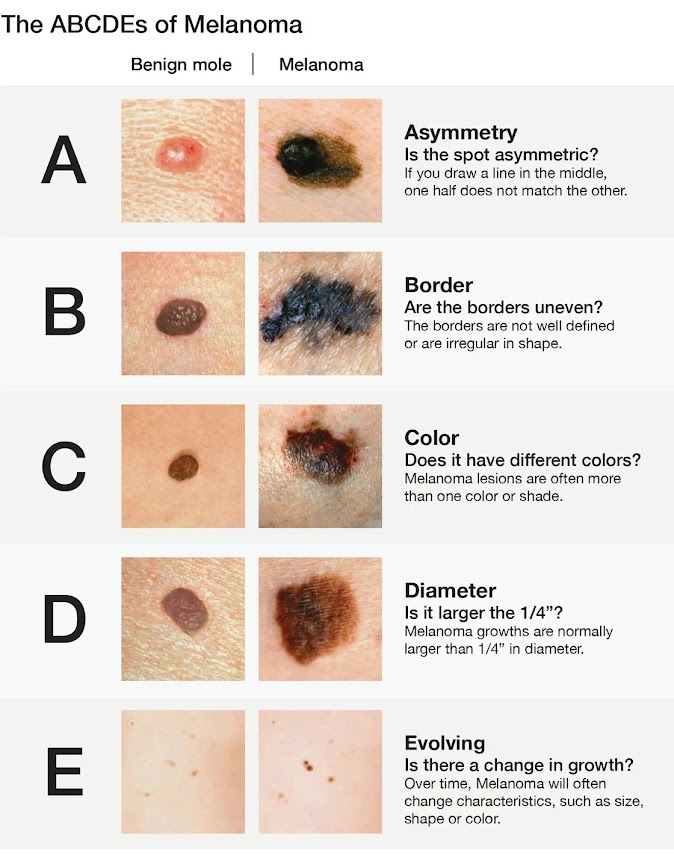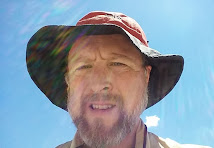Author’s note -- I hope that you enjoy learning from this resource! To help me to continue to provide valuable free content, please consider showing your appreciation by leaving a donation HERE. Thank you and Happy Trails!
It
is getting warmer outside, and people are shedding layers and taking off hats
and pushing back hoods, but you must be careful...it is sunburn season.
I know, really there is no such thing as sunburn season, you can get sunburned (erythema) or get snow blindness (photokeratitis) just as easily in the winter, but in the northern latitudes anyways, as the layers of clothes are removed the chances of sunburn increase.
Way
back in 2000, Dr. Mark F. Naylor wrote a fantastic article, titled “Shedding
Light on the Sunscreen Controversy”, on how to avoid sunburn and reduce your
risk of skin cancer. According to Dr.
Naylor and the ADD (American Academy of Dermatology) a history of getting sunburned
is the “greatest known environmental risk factor” for nodular and
superficially spreading melanomas. Those
at the greatest risk for skin melanoma
Repeated
intense sunburn, the type that leads to melanoma, is most common on the upper
backs, especially for men, and the legs, particularly for women. And while a nice tan does provide some
protection against future sunburning, tanning is your body’s response to “damage
that has already occurred because of sun exposure”. There is evidence that UVB radiation is the
principal cause of melanoma, as 90% of the Sun’s sunburning rays is in the UVB
range.
Avoiding
sunburning UVB rays or reducing your exposure to the Sun reduces your lifetime
chances of developing skin melanomas.
Protective clothing Wear long sleeves and long pants if you must be out between 10 am and 4 pm. The fabric’s weave is more important than its weight in determining the protection it provides from the Sun. A tight weave offers more protection than a loose weave.
Sunscreen Use a sunscreen with a SPF of 30 and preferably 45. If sunscreen “burns” or “stings” your skin, use products containing microfine titanium or zinc oxides, which are less likely to cause sensitivity. Sunscreen reduces UV radiation, but it’s practical depends on its proper use, so don’t forget the following points:
· Over
reliance A thin
layer of SPF 15 does not provide complete protection against the Sun’s rays, so
don’t forget the other protective measures.
· Amount Most people don’t use enough
sunscreen, don’t skimp.
· Timing Apply sunscreen 20 to 30
minutes before exposure to the Sun.
· Reapply Sunscreen wears, rubs, washes,
or sweats off over time, so reapply every two to three hours or after each
exposure to water, even when using “waterproof” or “water-resistant” products.
So, remember to take precautions to prevent sunburn and skin
cancer. Don’t become bleached bones on
the desert floor.
I hope that you enjoy learning from this resource! To help me to continue to provide valuable free content, please consider showing your appreciation by leaving a donation HERE. Thank you and Happy Trails!
I
hope that you continue to enjoy The Woodsman’s Journal Online and look for me
on YouTube at BandanaMan Productions for other related videos, HERE. Don’t forget to follow me on both The
Woodsman’s Journal Online, HERE,
and subscribe to BandanaMan Productions on YouTube. If you have questions, as always, feel free
to leave a comment on either site. I
announce new articles on Facebook at Eric Reynolds, on Instagram at
bandanamanaproductions, and on VK at Eric Reynolds, so watch for me.
That
is all for now, and as always, until next time, Happy Trails!
Sources
Naylor,
Mark F., Dr.; “Shedding Light on the Sunscreen Controversy”, Wilderness
Medicine Newsletter, May/June 2000, page 1 to 3, https://files.eric.ed.gov/fulltext/ED448991.pdf,
May 31, 2025
University
of Utah Health; “Yes, Your Eyes Can Get Sunburned”, [© 2025 University of Utah
Health], August 07, 2023, https://healthcare.utah.edu/healthfeed/2023/08/yes-your-eyes-can-get-sunburned,
May 31, 2025
Wikimedia;
“Shadow, Human Shadow.jpg”, by Sumesh Dugar, June 18, 2012, https://commons.wikimedia.org/wiki/File:Shadow,_Human_Shadow.jpg,
May 31, 2025
Wikimedia;
“Sunburn_Treatment_Practices.jpg”, by Phil Kates, March 4, 2006, https://commons.wikimedia.org/wiki/File:Sunburn_Treatment_Practices.jpg,
May 31, 2025














No comments:
Post a Comment